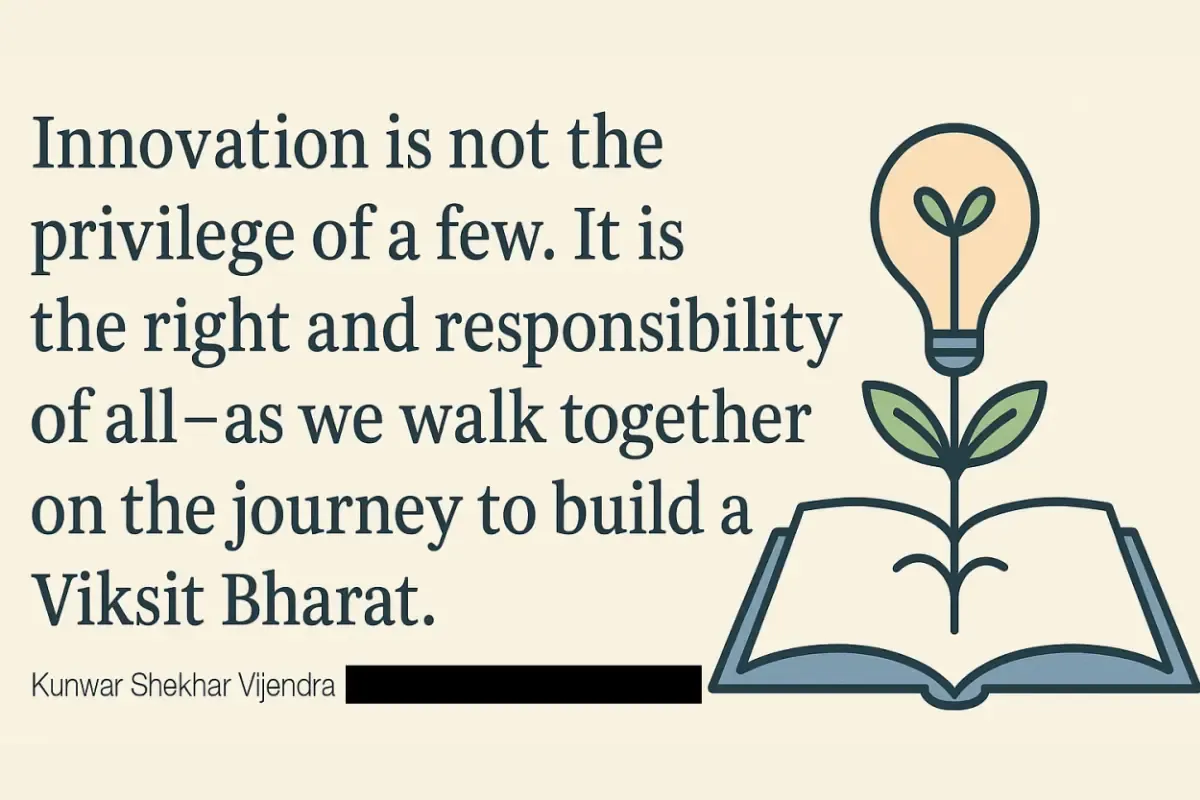As World Intellectual Property Day approaches on April 26, it is time for Indian academia to pause, reflect, and recalibrate how we understand innovation—particularly within the framework of higher education.
Shortly after the release of the Annual Report on Innovation in Higher Education Institutions (2023–24)—which highlighted a remarkable rise in patent filings from many Indian universities, including newer and private ones—there has been an unexpected surge of concerns questioning the merit and intent behind such filings.
What’s surprising is that these doubts are not being raised by policy watchdogs or international observers, but by senior academic leaders from within the system—those who have themselves benefitted from decades of institutional privilege.
A Matter of Mindset
This is not just a debate about metrics. It is a reflection of a deep-rooted mindset—one that views innovation as legitimate only when it emerges from traditional, well-funded, centrally privileged institutions. For decades, India’s innovation narrative has been dominated by a handful of elite establishments that have enjoyed structural advantages, global partnerships, and generous public funding.
Institutions like the IITs have certainly contributed immensely to India’s progress in science and technology. But it is fair—and necessary—to ask: Have they meaningfully engaged with the transformative goals outlined in the National Education Policy (NEP) 2020? Are they actively addressing the urgent, complex needs of Bharat—its villages, small towns, informal economies, and real grassroots challenges?
In contrast, many emerging institutions—operating without legacy but with purpose—are empowering students and faculty to think, create, and solve. They are instilling the belief that ideas born in rural labs or semi-urban towns can be just as powerful as those from elite corridors.
Patent Filings Are Not Trophies; They Are Seeds
Let this be said clearly and without apology: Patent filings are not trophies—they are seeds.
Seeds of courage, creativity, and confidence. Some will grow into granted patents. Some into startups. Many will simply grow into young minds who dare to believe that they can change the world.
When a student in a Tier 2 university or a faculty member in a modestly resourced lab files a patent, it is not a publicity stunt—it is an act of aspiration and participation in the nation\’s knowledge economy.
To dismiss these efforts because they do not come from elite institutions is not only unfair—it is a reflection of discomfort, perhaps even disbelief, that such institutions—some of them barely two decades old—could be among the top 10 in India for patent filings.
That discomfort must be addressed—not with criticism, but with collaboration.
A Global Perspective: The U.S. Example
Let us consider the United States, which leads the world in innovation. While MIT, Stanford, and Harvard are globally recognized, many of the top patent-producing institutions in the U.S. are public universities like the University of California system, the University of Texas, and Purdue University—institutions that work closely with state industries, local economies, and community challenges.
There, innovation is measured not by legacy, but by impact, access, and application.
India must take a similar path: innovation rooted in its realities, not confined by its reputations.
The Need for Contextual Innovation
India’s strength—Bharat’s strength—lies in its diversity: of language, context, culture, and challenge. We must stop applying a single institutional lens to measure progress. What we need is a framework that celebrates contextual innovation, including:
- Frugal, community-driven solutions in agriculture, health, and environment
- Technological interventions tailored to local economies and cultures
- A culture of IP awareness and protection embedded in education
Innovation is not just about laboratories. It is about lives. It is about relevance. And it is about responsibility.
Honouring the Vision of a Viksit Bharat
Our Hon’ble Prime Minister Shri Narendra Modi ji has consistently championed the idea of an Atmanirbhar Bharat—a self-reliant, confident nation rooted in innovation, inclusion, and indigenous solutions. His vision of a Viksit Bharat by 2047 rests on the pillars of knowledge empowerment, grassroots entrepreneurship, and Jan Bhagidari—people’s participation in national development.

To achieve this vision, we must recognize that innovation is not the monopoly of a few elite institutions. It must emerge from every corner of the country—across government and private institutions, rural and urban campuses, established centers and upcoming ecosystems.
Innovation in Bharat is not a race for prestige—it is a collective journey for purpose.
Rethinking Purpose Beyond Rankings
We must also begin to think beyond frameworks like NIRF, NAAC, and other ranking systems. These have their place in benchmarking quality, but not every effort is driven by a desire for ratings or visibility. To assume so is both myopic and disheartening, especially when institutions are working hard to build innovation ecosystems in geographies historically left behind.
Bharat’s rise as a Viksit Rashtra will not come from rankings—it will come from recognition, collaboration, and collective upliftment. Let us not fall into the trap of biting each other in pursuit of status. Instead, let us acknowledge, appreciate, and support every sincere effort toward a more innovative, inclusive, and self-reliant nation.
A Call to Celebrate Every Step
Innovation is not the privilege of a few. It is the right and responsibility of all—as we walk together on the journey to build a Viksit Bharat.
Let us celebrate every sincere step—whether it comes from an IIT, a state university, or an upcoming institution. Because the future of Bharat will not be built on legacy alone—it will be built on inclusion, courage, and imagination.
By Kunwar Shekhar Vijendra | Chancellor, Shobhit University | Chairman, ASSOCHAM National Education Council

